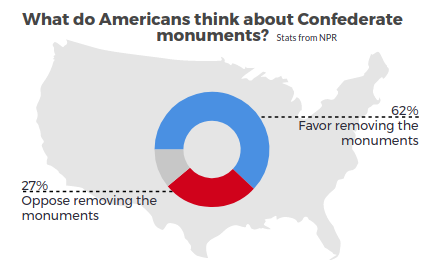May 28, 2018
A monumental debate
As a nation inextricably tied to slavery grapples with the resurgence of white nationalism, places of worship, civic spaces and national battlefields across Maryland face a divisive question: what to do with their countless Confederate monuments.
Author Jonathan Horn (’00) argues that rather than remove these monuments from public spaces, they should be contextualized with educational material. Horn spoke at a Cathedral panel regarding the windows this March. Horn’s book, The Man Who Would Not Be Washington: Robert E. Lee’s Civil War and His Decision That Changed American History, explains that Lee opposed Confederate monuments for fear of exacerbating regional strife.
“You can’t learn everything about a person like Robert E. Lee by just looking at a statue—you have to read a book to fully understand who somebody was,” Horn said. “Many of these statues don’t really commemorate the real Robert E. Lee; they commemorate the glorified image that wasn’t necessarily the real man at all. In many ways a Civil War monument tells you more about the people who put the memorial up than it does about the person it is supposed to honor.”
The purpose of Confederate monuments has long superseded honoring those they depict; many were intended to serve as physical reminders of white supremacy, Terry, who also spoke at the panel, said. Most statues were built during the Lost Cause, a Southern movement in the early 20th century that celebrated the valiance of the Confederacy while minimizing its connection to slavery.
By falsely claiming victory in the Civil War, the Lost Cause legitimized Jim Crow laws and institutionalized racism. In the 1960s, when Civil Rights leaders sought long-overdue equality for African-Americans, a new wave of Confederate monuments were built in bulk to intimidate them.

In the debate, location plays an important role. The National Park Service issued a statement vowing to keep Confederate monuments for educational purposes in its hundreds of parks and protected areas. In Maryland, Union and Confederate monuments will remain at Antietam National Battlefield, including a bronze statue of Robert E. Lee, National Battlefield Superintendent Susan Trail said. Because these monuments are located in a National Battlefield rather than a civic space, they present an educational opportunity, Trail said.
“To us, it’s really important and it’s an excellent way of conveying history by using the words and the material culture of people in the past to help us to understand them,” Trail said. “What would be lost would be opportunities for the public to gain some understanding by having physical objects they can look at and learn about.”